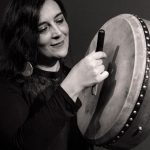
Voice
Ita
Il canto Sean Nos è il canto tradizionale irlandese non accompagnato da strumenti musicali.
Le caratteristiche principali del sean-nos:
1 – Una voce nuda (non dolce, e con una certa fierezza naturale);
2 – Niente vibrato
3 – Niente dinamica (forte/piano)
4 – L’emozioneè espressa attraverso l’uso dell’ornamentazione vocale, che varia da cantante a cantante.
5 – Ritmo libero, non metronomico.
6 – Il significato delle parole impone un canto dal cuore, con anima.
7 – Spesso enfasi sulle consonanti L, M, N, R per facilitare il ritmo libero e creare un effetto di drones.
8 – A volte nasalizzazione.
9 – La musica ha la precedenza sul testo.
10 – Spesso vengono introdotte sillabe senza significato.
11- Uso della pausa drammatica (glottal stop)
12 – Assenza di accompagnamento.
13 – Principio di variazione (la melodia varia di verso in verso e da una performance all’altra)
14 – Canto in lingua irlandese.
Nonostante questa precisa categorizzazione, in generale il termine sean-nos viene comunemente usato per indicare qualsiasi canto in gaelico senza accompagnamento.
Tre sono gli stili principali in Irlanda, riferibili alle tre contee di Ulster, Connacht, e Munster.
Ma anche nelle altre contee (specie nella contee di Cork) esistono tradizioni di sean-nos.
Molto spesso il sean-nos è accompagnato da danze create appositamente per essere eseguite senza accompagnamento strumentale.
Eng
Traditional Irish singing is the singing of traditional songs in the native styles such as sean nós (which translates as ‘in the old style’).
Other forms of traditional singing, even those with an added accompaniment, are heavily influenced by sean-nós singing, and the voice work is often almost identical.
The main features of sean-nós are:
1 – Ornamentation: Sean nós singers use ornamentation to to express emotion.
Ornamentation is usually improvised, therefore a song would never be performed the same way twice. Ornamentation can be melodic or rhythmic.
2 – Free rhythm/metre.
3 – Solo singing (unaccompanied)
4 – Variation.: the tune and rhythm of songs are varied from verse to verse and from performance to performance.
5 – Personal styles : singers often develop their own style of performance.
6 – Regional Styles : in the past, singers would learn to sing by listeneing to other singers in their region. This gave rise to regional styles of singing much the same as accents in language. The regions are; Connemara, (highly ornamental) West Cork/Kerrry, (nasalisation and glottal stop) West Waterford, and Donegal (simpler more melodic style).
7 – No Dynamics
8 – No vibrato generally.
9 – Nasalisation is sometimes used.
10 – Use of the Glottal stop.
11 – Use of interpolated vowel sounds.
Credits: celticworld.it -wikipedia.it – wikipedia.com – leavingcertmusic.weebly.com



